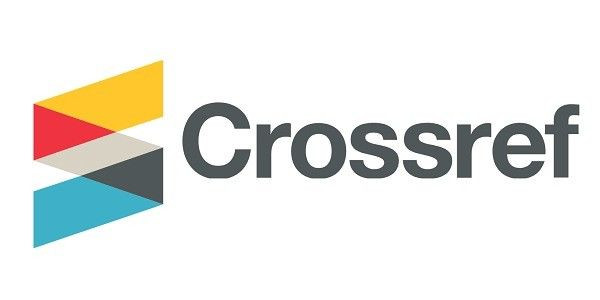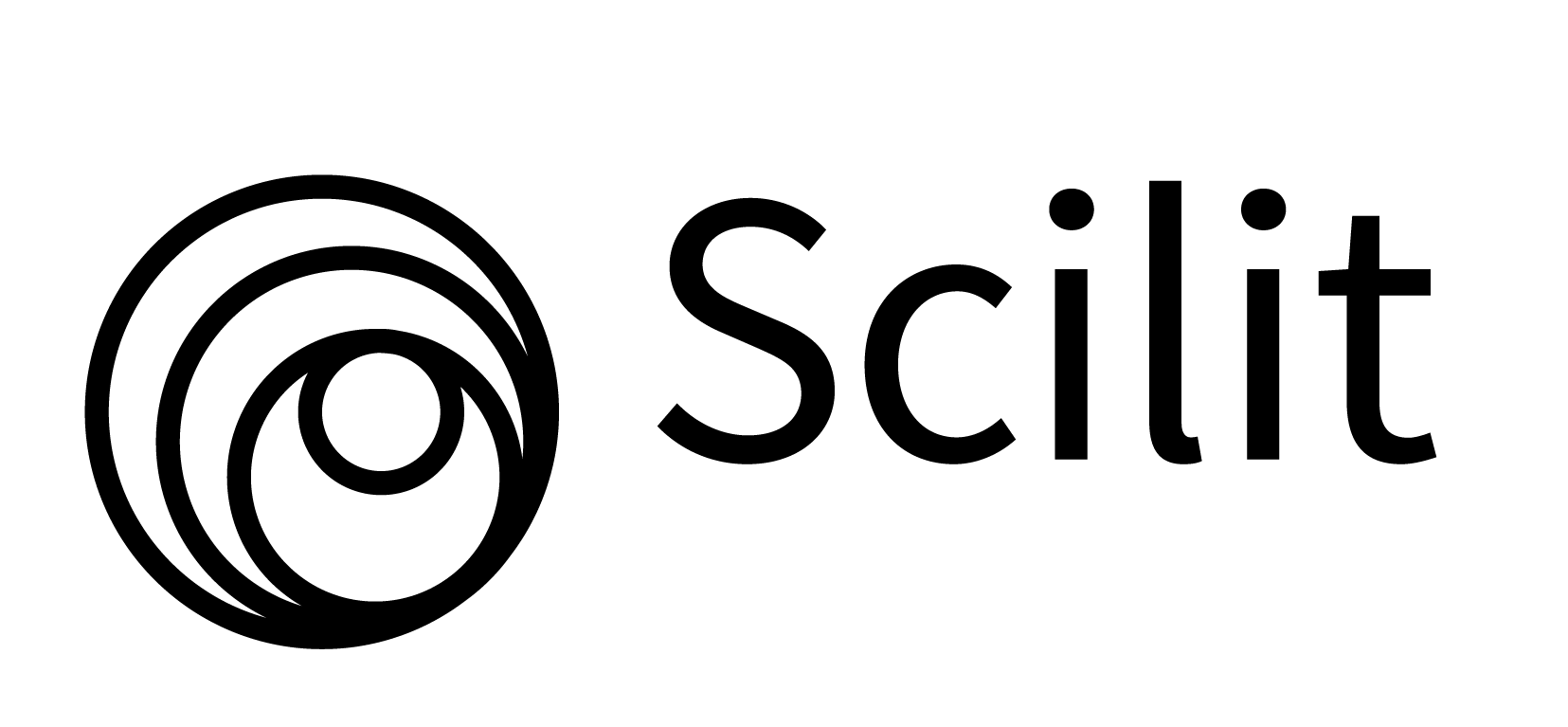Mini Review Article
Therapeutic Polymer Hydrogels for Biomedical Use: A Short Review of Critical Conclusions
- Mohammad Hossein Karami, Majid Abdouss
Corresponding author: Mohammad Hossein Karami, Majid Abdouss
Volume: 1
Issue: 1
Article Information
Article Type : Mini Review Article
Citation : Mohammad Hossein Karami, Majid Abdouss. Therapeutic Polymer Hydrogels for Biomedical Use: A Short Review of Critical Conclusions. Journal of Medicine Care and Health Review 1(1). https://doi.org/10.61615/JMCHR/2024/AUG027140829
Copyright: © 2024 Mohammad Hossein Karami. This is an open-access article distributed under the terms of the Creative Commons Attribution License, which permits unrestricted use, distribution, and reproduction in any medium, provided the original author and source are credited.
DOI: https://doi.org/10.61615/JMCHR/2024/AUG027140829
Publication History
Received Date
10 Aug ,2024
Accepted Date
23 Aug ,2024
Published Date
29 Aug ,2024
Abstract
Hydrogels are being developed as versatile frameworks in medicine delivery, wound healing, and regenerative medicine due to their unique properties, including high water content and biocompatibility. In medicine delivery, smart hydrogels capable of responding to various stimuli enable controlled drug release while reducing side effects. Integration with natural and synthetic polymers, as well as magnetic nanoparticles, enables targeted delivery and sustained release, demonstrating promising applications in inner ear drug administration and intravascular treatments. Additionally, carbon quantum dots and hydrogel nanocomposites enhance solubility, drug loading capacity, and anticancer effects. In wound care, hydrogels promote healing through moisture retention, nutrient exchange, and infection protection. Recent advancements include antibacterial hydrogels with conductive properties and glucose-responsive formulations for diabetic wound repair, highlighting the incorporation of biomolecules to aid in healing. In regenerative medicine, hydrogels mimic the extracellular matrix and support tissue engineering, with innovations in collagen/alginate/fibrin-based compositions showing promise in soft tissue repair and complex tissue constructs. Techniques like cryo-bioprinting are advancing the development of anisotropic hydrogels, further expanding their application in muscle-tendon and engineered cartilage tissue engineering. Overall, these advancements offer significant potential for improved therapeutic efficacy across medical fields.
Keywords: Polymer Hydrogel, Drug Delivery Systems, Wound Healing, Regenerative Medicine, Natural polymer.
►Therapeutic Polymer Hydrogels for Biomedical Use: A Short Review of Critical Conclusions
Mohammad Hossein Karami1*, Majid Abdouss1*
1Department of Chemistry, Amirkabir University of Technology, P.O. Box 15875- 4413, Tehran, Iran.
Introduction
Polymer hydrogels are three-dimensional systems of polymer chains that have the capacity to assimilate and hold huge sums of water [1]. Within the field of science, polymer hydrogels have picked up noteworthy consideration due to their biocompatibility and similitude to characteristic tissues. These materials have been utilized in different biomedical applications, such as medicate conveyance frameworks, tissue designing, wound recuperating, and biosensors [2-5]. The special properties of polymer hydrogels, such as their tall water substance, tunable mechanical properties, and capacity to imitate the extracellular lattice, make them perfect candidates for utilization in natural frameworks. Analysts have been investigating distinctive sorts of polymers and crosslinking strategies to tailor the properties of hydrogels for particular applications. Generally, polymer hydrogels hold an awesome guarantee within the field of science and have the potential to revolutionize the way we approach different restorative challenges [6]. Their flexibility and biocompatibility make them important apparatuses for progressing investigations and progressing healthcare results. Hydrogels are systems made of hydrophilic polymers that can swell in water and hold their shape while retaining water. Characteristic polymers, like alginate, starch, and chitosan, are perfect for making hydrogels due to their biocompatibility and natural invitingness [8-9]. These hydrogels have different applications in medication, such as sedate conveyance, wound dressing, and tissue recovery. Biocompatibility is significant for biomedical utilization, guaranteeing negligible hurt to encompassing tissues. In any case, common polymer hydrogels frequently need sturdiness and mechanical quality, which can be moved forward through cross-linking or blending with other materials [10]. Biodegradability is additionally basic for tissue recovery, permitting cells to grow and spread within the hydrogel. The rate of biodegradation depends on polymer properties like atomic weight and hydrophilicity. This article addresses three important issues in bio-hydrogels and briefly provides some tips about them (Fig.1).
Fig. 1. Important points about using polymer hydrogels in biotechnology

Drug Delivery Systems
Hydrogels are efficient drug delivery systems that can retain water and drug particles, protecting them from harsh environments. Smart hydrogels can respond to various stimuli and undergo phase transitions, making them ideal for controlled drug release [12]. As the demand for hydrogels increases, they are designed with various functionalities such as conductivity and self-healing capabilities. Natural polymer-based hydrogels combined with synthetic polymers or inorganic particles offer a range of functions for drug delivery. Hydrogels containing different drugs have shown promising results in ongoing studies and reducing side effects in animal experiments. Magnetic nanoparticles, such as Fe3O4 particles, are commonly used in drug delivery systems for targeted and controlled delivery [13-15]. Innovative magnetic hydrogel microrobots with sustained drug release and targeted movement have been developed for inner ear administration, showing positive results in preventing deafness [16]. Hybrid gel beads and capsule microrobots based on magnetic materials have been designed for intravascular targeted drug delivery applications. Carbon quantum dots are also being researched for drug delivery due to their unique properties, such as excellent fluorescence and drug-loading capacity [18]. Researchers have developed hydrogel nanocomposite films and bionanogels for drug delivery, showing pH-sensitive and prolonged drug release properties with enhanced anticancer effects. These innovative drug delivery systems offer potential solutions for improving drug delivery efficiency and reducing side effects in various medical applications [19].
Wound Dressings
Hydrogels have received attention as wound dressings due to their high water content, providing a moist environment for faster healing and pain relief. They also aid in nutrient exchange and protect against infections during the wound-healing process. Recent studies have focused on natural polymer-based hydrogels for wound care [20]. Hydrogels cross-linked with zinc have shown antibacterial properties and promote wound healing by enhancing fibroblast migration and tissue formation. Alginate dressings, especially those cross-linked with calcium, are preferred for clinical use due to their hemostatic properties. Antibacterial hydrogels with conductive properties have also been developed for wound repair. In addition to traditional wound healing methods, biomolecules such as enzymes and growth factors have been incorporated into functionalized hydrogel formulations to improve wound healing [21-25]. Glucose-responsive hydrogels with anti-inflammatory and antibacterial properties have shown promise in diabetic wound repair. Composite hydrogels with bioactive substances have also been designed for diabetic wound healing, promoting angiogenesis and reducing oxidative stress [24-26]. Novel exosome-loaded hydrogels have been developed for diabetic wound repair, using photo-crosslinking for targeted exosome release. These hydrogels demonstrate strong adhesion, self-healing, and responsiveness to pH, H2O2, and glucose levels to accelerate wound healing by regulating the wound environment [25].
Frameworks for Regenerative Medicine (Scaffolds)
Hydrogels are being widely studied as platforms for regenerative medicine because they can mimic the extracellular matrix (ECM), have high water content, and support cell health. These hydrogels allow for the exchange of oxygen, nutrients, and metabolites, making them ideal substitutes for tissue engineering [26]. By combining natural polymers in hydrogels, a versatile platform for tissue engineering is provided, offering biocompatibility, biodegradability, and mechanical tunability to mimic the ECM. Different types of hydrogels, such as collagen/alginate/fibrin-based hydrogels, have been developed for soft tissue engineering and have shown potential for creating pancreas and musculoskeletal tissues. Studies have shown that hydrogels with similar mechanical properties to native tissues can enhance tissue repair [27]. New composite hydrogels incorporating inorganic fillers have been developed to improve performance in tissue engineering applications. Anisotropic cell encapsulation in 3D hydrogels is important for tissues like skeletal muscle and cardiac tissue. Techniques such as cryo-bioprinting and magneto-patterning have been used to create hydrogels with anisotropic properties for applications in muscle-tendon units and engineered cartilage constructs, offering new possibilities for complex tissue engineering [28-20].
Conclusion
Hydrogels are developing flexible and efficient solutions for various biomedical applications, including drug delivery, wound healing, and regenerative medicine. Their unique properties, such as high water content, biocompatibility, and the ability to retain and release drugs in response to specific stimuli, make them particularly suitable for controlled and targeted therapies. Incorporating innovative materials like magnetic nanoparticles, carbon quantum dots, and bioactive substances into hydrogel formulations has significantly improved their performance, such as promoting angiogenesis, reducing side effects, and accelerating wound healing. In the field of wound care, hydrogels not only create a moist healing environment but also possess antibacterial properties and facilitate nutrient exchange, thereby enhancing the overall wound-healing process. Progress in hydrogel designs, such as glucose-responsive systems and exosome-loaded formulations, offer promising strategies for managing complex wounds, especially in diabetic patients. Additionally, hydrogels play a vital role in regenerative medicine by closely mimicking the extracellular matrix, thereby supporting cell health and tissue growth. Their mechanical flexibility and biocompatibility enable the construction of various tissue types, with ongoing research enhancing their functionality through innovative techniques like cryo-bioprinting and magneto-patterning.
Credit Authorship Contribution Statement
Mohammad Hossein Karami: Supervision, Validation, Formal analysis, Data curation, Investigation, Resources, Writing – original draft, Writing - review & editing, Visualization, Project administration, Methodology. Majid Abdouss: Supervision, Validation.
Declaration of Competing Interest
The authors declare that they have no known competing financial interests or personal relationships that could have appeared to influence the work reported in this paper.
- Arnold, M. Morgan, E. Rumgay, H. Mafra, A. Singh, D. Laversanne, M. Vignat, J. Gralow, J.R. Cardoso, F. Siesling, S.b. (2022). Current and future burden of breast cancer: Global statistics for 2020 and 2040. Breast. 66:15-23.
- Li, S. Silvestri, V. Leslie, G. Rebbeck, T.R. Neuhausen, S.L. Hopper, J.L.Nielsen, H.R. Lee, A. Yang, X. McGuffog, L. (2022). Cancer Risks Associated with BRCA1 and BRCA2 Pathogenic Variants. J. Clin. Oncol. 40(14): 1529-1541.
- Mundekkad, D. Cho,W.C. (2022). Nanoparticles in Clinical Translation for Cancer Therapy. Int. J. Mol. Sci. 23(3): 1685.
- Rej, R.K. Roy, J. Allu, S.R. (2024). Therapies for the Treatment of Advanced/Metastatic Estrogen Receptor-Positive Breast Cancer: Current Situation and Future Directions. Cancers. 16(3): 552.
- Karami,M, H. Abdouss,M. (2024). Cutting-edge tumor nanotherapy: Advancements in 5-fluorouracil Drug-loaded chitosan nanoparticles, Inorg. Chem. Commun. 164: 112430.
- Yao, Y. Zhou, Y. Liu, L. Xu, Y. Chen, Q.Wang, Y.Wu, S. Deng, Y. Zhang, J. Shao, A. (2020). Nanoparticle-Based Drug Delivery in Cancer Therapy and Its Role in Overcoming Drug Resistance. Front. Mol. Biosci. 7: 193.
- Kong, X. Qi, Y. Wang, X. Jiang, R. Wang, J. Fang, Y. Gao, J. Chu Hwang, K. (2023). Nanoparticle drug delivery systems and their applications as targeted therapies for triple negative breast cancer. Prog. Mater. Sci. 134: 101070.
- Ajith, S. Almomani, F. Elhissi, A. Husseini, G.A. (2023). Nanoparticle-based materials in anticancer drug delivery: Current and future prospects. Heliyon. 9(11): 21227.
- Rethi, L. Mutalik, C. Anurogo, D. Lu, L.S. Chu, H.Y. Yougbaré, S. Kuo, T.R. Cheng, T.M. Chen, F.L. (2022). Lipid-Based Nanomaterials for Drug Delivery Systems in Breast Cancer Therapy. Nanomaterials. 12(17): 2948.
- Bourang, S. Noruzpour, M. Jahanbakhsh Godekahriz, S. Ebrahimi, H.A.C. Amani, A. Asghari Zakaria, R. Yaghoubi, H. (2024). Application of nanoparticles in breast cancer treatment: A systematic review. Naunyn. Schmiedebergs Arch. Pharmacol. 1-47.
- Sartaj, A. Qamar, Z. Qizilbash, F.F.Annu, Md, S. Alhakamy, N.A. Baboota, S. Ali, J. (2021). Polymeric Nanoparticles: Exploring the Current Drug Development and Therapeutic Insight of Breast Cancer Treatment and Recommendations. Polymers. 13(24): 4400.
- Liu, Y. Guo, K. Ding, M. Zhang, B. Xiao, N. Tang, Z. Wang, Z. Zhang, C. Shubhra. (2022). Q.T.H. Engineered Magnetic Polymer Nanoparticles Can Ameliorate Breast Cancer Treatment Inducing Pyroptosis–Starvation along with Chemotherapy. ACS Appl. Mater. Interfaces. 14(37): 42541-42557.
- Długosz, O. Matyjasik, W. Hodacka, G. Szostak, K. Matysik, J. Krawczyk, P. Piasek, A. Pulit-Prociak, J. Banach, M. (2023). Inorganic Nanomaterials Used in Anti-Cancer Therapies:Further Developments. Nanomaterials. 13(6): 1130.
- Karami,M, H. Abdouss,M. Maleki,B. (2024). The state of the art metal nanoparticles in drug delivery systems: A comprehensive review. Nanomed J. 11(3): 222-249.
- Karami,M, H. Aghabarari,B. (2024). The advancement of molybdenum disulfide quantum dots nanoparticles as nanocarrier for drug delivery systems: Cutting-edge in dual therapeutic roles, J. Mol. Struct. 1318(1): 139149.
- Saif, A. Anjum, L. Faisal, Z. Akram, N. Shah, Y.A. Irfan, R. Saeed, F. Afzaal, M. Asif Shah, M. (2023). Recent advances in protein-based nanoparticles and their applications in the delivery of bioactive compounds. Int. J. Food Prop. 26(2): 2866–2880.
- Mohan, H. Fagan, A. Giordani, S. (2023). Carbon Nanomaterials (CNMs) in Cancer Therapy: A Database of CNM-Based Nanocarrier Systems. Pharmaceutics. 15(5): 1545.
- Rajana, N. Mounika, A. Chary, P.S. Bhavana, V. Urati, A. Khatri, D. Singh, S.B. Mehra, N.K. (2022). Multifunctional hybrid nanoparticles in diagnosis and therapy of breast cancer. J. Control. Release. 352: 1024-1047.
- Marshall, S.K. Angsantikul, P. Pang, Z. Nasongkla, N. Hussen, R.S.D. Thamphiwatana, S.D. (2022). Biomimetic Targeted Theranostic Nanoparticles for Breast Cancer Treatment. Molecules. 27(19): 6473.
- Araújo, J.L. Vieira, J.A. Dos Santos Silva, M. Lima, A.K.O. da Silva Luz, G.V. Carneiro, M.L.B. Azevedo, R.B. (2023). Benefits of using polymeric nanoparticles in breast cancer treatment: A systematic review. 3 Biotech. 13(11): 357.
- Dheyab, M.A. Aziz, A.A. Khaniabadi, P.M. Jameel, M.S. Oladzadabbasabadi, N. Rahman, A.A. Braim, F.S. Mehrdel, B. (2023). Gold nanoparticles-based photothermal therapy for breast cancer. Photodiagnosis Photodyn. Ther. 42: 103312.
- Rahimkhoei, V. Alzaidy, A.H. Abed, M.J. Rashki, S. Salavati-Niasari, M. (2024). Advances in inorganic nanoparticles-based drug delivery in targeted breast cancer theranostics. Adv. Colloid. Interface Sci. 329: 103204.
- Mal, S. Chakraborty, S. Mahapatra, M. Pakeeraiah, K. Das, S. Paidesetty, S.K. Roy, P. (2024). Tackling breast cancer with gold nanoparticles: Twinning synthesis and particle engineering with efficacy. Nanoscale Adv. 6(11): 2766-2812.
- Kumar, P.P.P. Lim, D.K. (2023). Photothermal Effect of Gold Nanoparticles as a Nanomedicine for Diagnosis and Therapeutics. Pharmaceutics. 15(9): 2349.
- Zhao, L. Zhou, Y. Zhang, J. Liang, H. Chen, X.Tan, H. (2023). Natural Polymer-Based Hydrogels: From Polymer to Biomedical Applications. Pharmaceutics. 15(10): 2514.
- Tai, J. Fan, S. Ding, S. Ren, L. (2022). Gold Nanoparticles Based Optical Biosensors for Cancer Biomarker Proteins: A Review of the Current Practices. Front. Bioeng. Biotechnol. 10: 877193.
- Karami,M, H. Abdouss,M. (2024). Recent advances of carbon quantum dots in tumor imaging. Nanomed J. 11(1): 13-35.
- Prasad, A. Bakr, M.M. ElMeshad, A.N. (2024). Surface-functionalised polymeric nanoparticles for breast cancer treatment: Processes and advances. J. Drug Target.32(7):770-784.
- Karami, MH. Abdouss, M. (2024). A General Evaluation of the Cellular Role in Drug Release: A Clinical Review Study. Clin J Obstet Gynecol. 7: 042-050.
- Karami, MH. Abdouss, M, Karami, M. (2023). Evaluation of In vitro and Ex vivo Models for Studying the Effectiveness of Vaginal Drug Systems in Controlling Microbe Infections: A Systematic Review. Clin J Obstet Gynecol. 6: 201-215.
- Falagan-Lotsch, P. Grzincic, E.M. Murphy, C.J. (2017). New Advances in Nanotechnology-Based Diagnosis and Therapeutics for Breast Cancer: An Assessment of Active-Targeting Inorganic Nanoplatforms. Bioconjug. Chem. 28(1): 135–152.
Download Provisional PDF Here
PDF




p (1).png)




.png)




